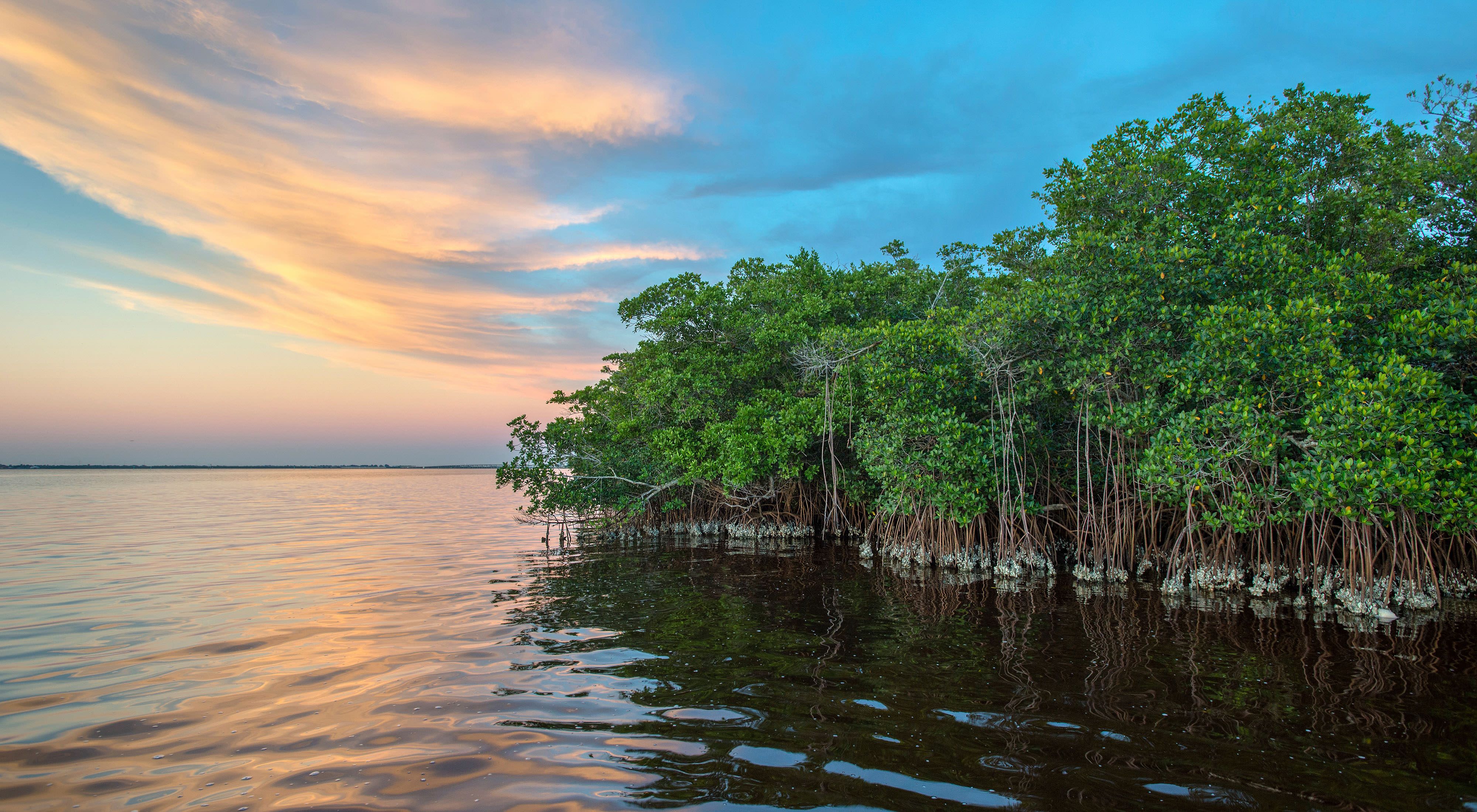The Nature Conservancy Identifies Sites for Mangrove Insurance Pilot Projects in The Bahamas, Florida, and Mexico
New report from The Nature Conservancy shows how first-of-its-kind mangrove insurance policy can be a boon to coastal communities.
Media Contacts
-
Alessandra Clark
Email: alessandra.clark@tnc.org
Today, The Nature Conservancy (TNC), in collaboration with AXA XL, CINVESTAV-Merida, the University of California Santa Cruz, and Builders Initiative Foundation— published the final of three reports that assess the feasibility of mangrove insurance policies in The Bahamas, Florida, and Mexico. This final report builds on previous research that showed these locations have some of the largest areas of mangroves that would be cost-effective to restore for their flood risk reduction benefits. The report identifies nine specific locations—three in Mexico, four in Florida, and two in The Bahamas—as potential sites for mangrove insurance pilot projects. These locations were identified based on the presence of large areas of mangroves, the high protective value of mangroves, and strong interest from key stakeholders.
Mangroves— a group of trees and shrubs that live along shorelines, rivers, and estuaries— are among the most critically important coastal habitats in the world. In many areas of Mexico, Florida, and The Bahamas, major hurricanes of Category 3 or more make landfall more frequently than in other parts of the world, and mangroves often serve as the first line of defense in dissipating wave energy, slowing storm surge, and reducing inland flooding. Mangroves are hotspots for biodiversity, capture massive amounts of carbon dioxide and other greenhouse gasses, and are some of the world’s most productive fishing grounds— providing economic benefits to communities as a nursery for commercial fish stock.
Mangrove forests, however, are rapidly declining worldwide— threatened by both human impact and natural factors, such as storm events. And with that loss, coastal communities lose significant flood risk reduction benefits provided by mangroves, as well as opportunities for sustainable fisheries, carbon sequestration, tourism, and recreation. Following a storm, active restoration efforts are needed to speed up recovery and re-establish mangroves to their full potential. Financing post-storm restoration and repair of mangroves, through innovative solutions such as an insurance policy, is crucial to ensuring that the many benefits of mangroves are maintained for coastal communities and future generations.
“Mangroves are cornerstones of climate resilience for coastal communities – they serve as an important source of risk reduction and provide sustenance and livelihood co-benefits along with carbon sequestration,” said Daniel Morchain, TNC’s Global Climate Adaptation Director. “Given the alarming rate of mangrove loss worldwide, a viable solution is needed to finance mangrove restoration and protection. We are optimistic about the potential for establishing mangrove insurance policies in locations where mangroves buffer communities from the impacts of storms, support the health and well-being of local communities, and capture and store carbon to mitigate the impacts of climate change.”
Placing insurance policies on nature has a track record of success. In 2019, TNC and partners facilitated the creation of an insurance policy on coral reef systems in Quintana Roo, Mexico. When Hurricane Delta hit in 2020, it officially triggered the world’s first-ever coral reef insurance policy, and the resulting payout of nearly $850,000 was used to offset the costs of repairing the insured reefs and beaches along the Mesoamerican Reef in the Yucatan Peninsula. If implemented, mangrove insurance pilot projects at the identified sites have the potential to protect people from devastating damages in the event of a natural disaster, similar to the coral reef insurance payout in Quintana Roo.
Building upon the success of reef insurance in Mexico, and following a 2020 Bank of America-supported feasibility study finding that coral reefs in Hawai‘i could be similarly insured against natural disasters, TNC established the first-ever coral reef insurance policy in the U.S. in 2022. While the Mexico reef insurance covers damage from hurricanes, the Hawai’i policy adds damage from tropical storms as well to coverage – paving the way for new types of parametric insurance for nature.
“For a long time, the importance of nature has been underestimated by society. That’s now starting to shift. Our partnership with The Nature Conservancy has enabled us to understand the tangible and quantifiable value of mangroves and the protection to communities they provide. Ultimately by conserving nature and restoring ecosystems, we reduce vulnerability and increase resilience – central to our role as an insurer,” said Suzanne Scatliffe, Global Sustainability Director, AXA XL.
Across the entire focal area of the report, mangroves provide more than $17 billion in flood protection benefits. While this phase of work focused on the feasibility of a mangrove insurance policy in specific locations, the next phase of work will focus on designing the insurance scheme and establishing the institutional relationships needed to purchase the insurance and manage any payouts to ensure the appropriate restoration work takes place.
The Nature Conservancy is a global conservation organization dedicated to conserving the lands and waters on which all life depends. Guided by science, we create innovative, on-the-ground solutions to our world’s toughest challenges so that nature and people can thrive together. We are tackling climate change, conserving lands, waters and oceans at an unprecedented scale, providing food and water sustainably and helping make cities more sustainable. The Nature Conservancy is working to make a lasting difference around the world in 81 countries and territories (40 by direct conservation impact and 41 through partners) through a collaborative approach that engages local communities, governments, the private sector, and other partners. To learn more, visit nature.org or follow @nature_press on X.
